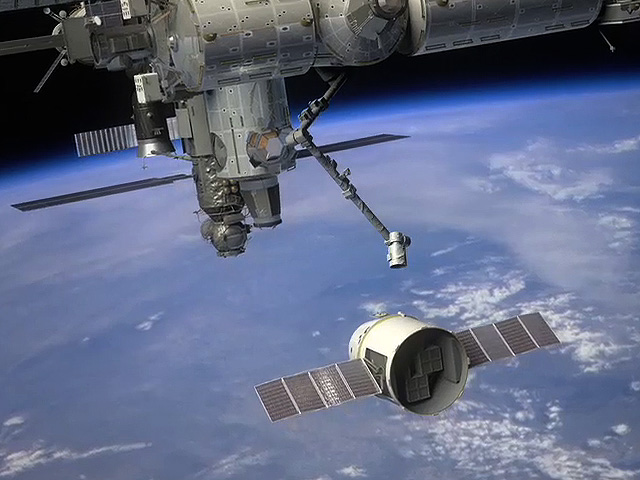
The Dragon capsule was launched back in August with more than three tons of supplies for the International Space Station, including the Hewlett Packard Spaceborn Computer that may someday help humans reach Mars. In addition to the live mice, the delivery also included a special treat for the space station astronauts.
The mice are part of NASA’s Rodent Research-9 study, enacted to find ways to help humans cope with the effects of a zero-gravity environment. The study may also help arthritis sufferers back here on Earth.
.@Astro_Paolo and @AstroKomrade released @SpaceX #Dragon with Canadarm2 at 4:40am ET today for return to Earth. https://t.co/5rHQlLLgWo pic.twitter.com/PhQkutEWdN
— International Space Station (@Space_Station) September 17, 2017
Live Science reports that scientific experiments onboard include lung tissue that was grown in space and protein crystals created in microgravity that may help combat Parkinson’s disease. The Michael J. Fox Foundation is supporting the research, helping scientists design optimized therapies to find a cure for the disease.
The Dragon capsule from SpaceX is currently the only vehicle capable of ferrying cargo to and from the ISS (when the rocket doesn’t blow up during launch, that is). Russia’s Progress and Cygnus spacecraft can deliver supplies, but both capsules are designed to burn up during reentry into the atmosphere. The Soyuz can bring human astronauts to and from the ISS, although there’s not much room for cargo onboard.
This was the 12th cargo mission for the SpaceX Dragon program, and it’s also the last time SpaceX plans to use a brand-new capsule for the assignment. From now on, the company plans to launch used and refurbished capsules for future missions. They may be facing some competition soon however, as Boeing’s Starliner space capsule is poised to begin providing transportation service into space.
After their month-long excursion in space, the 20 intrepid mouse astronauts don’t have much to look forward to. After splashing down in the Pacific Ocean southwest of Long Beach, California, the mice will be flown to the lab where they’ll be euthanized and dissected for research.


